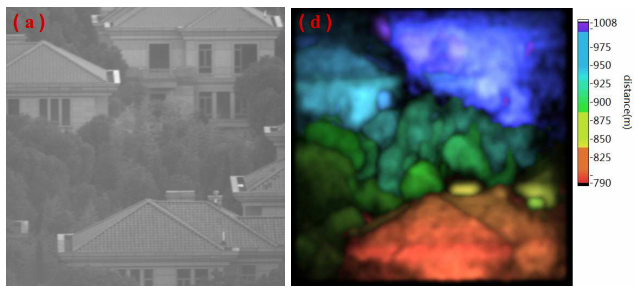First 3-D Ghost Images From A Single Pixel
Ghost imaging is the extraordinary technique of bouncing a laser beam off an object and making high quality images from the reflected light using a single pixel. This single pixel records many data points which must be stitched together to create the image.

But there is no scanning involved (which would be equivalent to taking an ordinary picture very slowly).
Instead, the data from the single pixel is compared against the intensity of the original laser beam, which must be randomised by passing it through frosted glass. Then any correlations between the original and reflected beam reveal information about the object in the image.
It is these correlations that physicists use to assemble the picture, known as a ghost image.
That may sound rather fiddly and time consuming but it is actually hugely efficient. The amount of data required to create an image in this way is tiny compared to the amount that ordinary imaging requires. It is possible to record the equivalent of a 5 megapixel image using just 50,000 pixels.
Physicists have demonstrated this technique in various different ways since 1995 but it is only in the last few years that they’ve begun to understand it properly and started to exploit it.
Today, Wenlin Gong and pals at the Shanghai Institute of Optics and Fine Mechanics in China reveal just how powerful the technique can be. They’ve designed and built a ghost imaging device that uses a single pixel to record three dimensional images.
The modification from previous ghost imaging systems is simple. They use short laser pulses of just 10 ns to briefly illuminate the object of interest and then turn on their single pixel for a short period of time so that it captures light reflected only from a specific distance.
This kind of gating produces image slices that can then be put together to create a three dimensional scene, a technique known as laser detection and ranging or LADAR.
To show off their idea, these guys use a green laser and a small telescope fitted with a single pixel to capture 3-D images of ordinary objects about a kilometre away. The image above, for example, shows a group of houses and trees about 900 metres away and has a spatial resolution of 25cm and a depth resolution of 60 cm.
That’s impressive. It doesn’t take much imagination to realise that this could be rather useful. As Wenlin Gong and pals put it modestly: “This technique has a great application prospect in remote sensing,” Quite!
Ref: arxiv.org/abs/1301.5767: Three-Dimensional Ghost Imaging Ladar
Keep Reading
Most Popular
Large language models can do jaw-dropping things. But nobody knows exactly why.
And that's a problem. Figuring it out is one of the biggest scientific puzzles of our time and a crucial step towards controlling more powerful future models.
The problem with plug-in hybrids? Their drivers.
Plug-in hybrids are often sold as a transition to EVs, but new data from Europe shows we’re still underestimating the emissions they produce.
Google DeepMind’s new generative model makes Super Mario–like games from scratch
Genie learns how to control games by watching hours and hours of video. It could help train next-gen robots too.
How scientists traced a mysterious covid case back to six toilets
When wastewater surveillance turns into a hunt for a single infected individual, the ethics get tricky.
Stay connected
Get the latest updates from
MIT Technology Review
Discover special offers, top stories, upcoming events, and more.